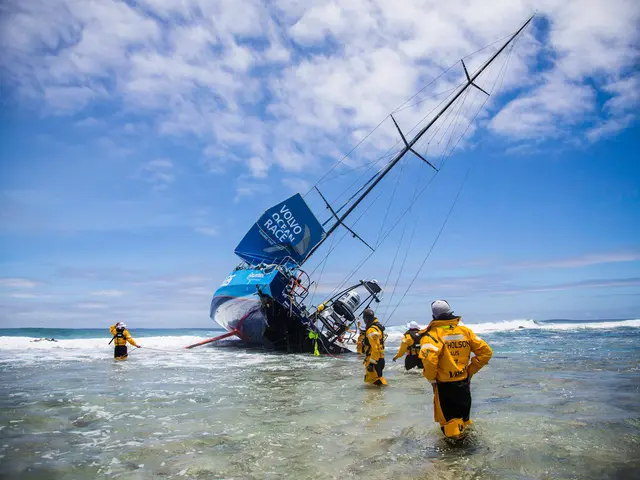Europe pulls ahead: Technology advancements in semiconductors give European nations an edge over China by approximately 15 years in the global competition
In the global semiconductor race, China finds itself lagging behind the Western world by a significant margin, according to industry experts. This gap is particularly evident in the adoption of Extreme Ultraviolet (EUV) lithography technology, a critical step towards semiconductor self-sufficiency.
Once a leading player in the global smartphone market, Huawei is now constrained by using 7 nm chips, which limit the performance of flagship devices like the Mate series. This predicament highlights the importance of EUV technology, which enables the manufacturing of chips at advanced nodes such as 5nm and below.
The United States has been successful in limiting exports of EUV technologies to China. Since 2020, it has pressured countries to do the same, leaving Chinese manufacturers without access to cutting-edge equipment. This has forced China to rely on older 193nm deep ultraviolet (DUV) lithography, a method that is complex and costly, leading to low yields.
China's main struggle is the US-led export controls blocking access to ASML's advanced EUV lithography machines, the leading manufacturer of such systems essential for producing nodes below 5 nm. Despite significant state support over the past five years, China’s lithography capabilities remain minimal with little to no growth in global market share for advanced lithography tools.
Some Chinese companies, like SiCarrier, are exploring alternative EUV light sources, such as laser-induced discharge plasma for the critical 13.5nm wavelength. However, even optimistic timelines suggest China will only partially close the EUV capability gap in the near term.
The leading Chinese foundry, SMIC, has developed a 5.5nm-class process, but it is still in pilot production with yields below 20%, far behind competitors like TSMC and Samsung who are moving to 2nm processes by late 2025.
The Chinese government is working towards developing indigenous EUV solutions to reduce dependence on foreign technology. Projects aimed at developing a domestic version of EUV technology are underway, but it could take 10 to 15 years for China to reach current capabilities.
In the meantime, Chinese manufacturers are adapting DUV technologies to produce chips at 7 nm and potentially 5 nm, a significant leap if confirmed. However, the complexity and costs associated with developing advanced technologies like EUV might extend the delay in China's ability to reach current capabilities.
The US restrictions on EUV technology are at the center of a controversy surrounding China's semiconductor industry. The Western semiconductor industry is continuing to push boundaries with High-NA EUV technology, promising further advancements in chip miniaturization capabilities. As China catches up, it will be a race against time to bridge the gap and compete on a global scale.
- The significance of EUV technology in semiconductor manufacturing is underscored by Huawei's predicament, limited by using 7 nm chips, which impedes performance in flagship devices like the Mate series.
- The United States has impeded China's advancement in EUV technology by limiting exports, forcing reliance on older 193nm deep ultraviolet (DUV) lithography, a complex and costly method.
- China's lithography capabilities remain minimal despite significant state support over the past five years, mainly due to US-led export controls blocking access to ASML's advanced EUV lithography machines.
- Some Chinese companies are investigating alternative EUV light sources, aiming to bridge the gap, but even optimistic timelines suggest only a partial closure in the near term.
- For now, Chinese manufacturers are adapting DUV technologies to produce chips at 7 nm and potentially 5 nm, a significant leap if confirmed, but the complexity and costs associated with developing advanced technologies like EUV could further delay China's advancement.
- As China catches up in the global semiconductor race, personal-finance and business investments in the aerospace, energy, and finance industries hinge on the successful development of indigenous EUV technology to compete on a global scale.








